Think you’ve got the perfect sleeping bag for your next backpacking trip? Not so fast! There are a few things you need to take into account before hitting the trail. In this ultimate backpacking sleeping bag guide, we’ll show you what to look for in a sleeping bag, and give you six helpful tips and tricks for choosing the right one and best ways to use it on your next trip. So pull out your gear list and get ready to start packing – your comfy slumber is waiting!

(You want to get the lowdown on all there is to know about tent camping? We have put together a comprehensive article detailing all you need to know before your first(next adventure):
Tap Here to Check out the Ultimate Tent Camping guide >>
What to look for when choosing a sleeping bag
There are a few key things to look for when choosing the right sleeping bag. First, you’ll want to consider the temperature rating. This will ensure that you stay warm enough in your sleeping bag, no matter what the conditions are like outside. Next, think about the weight and packability of the sleeping bag.
You don’t want something that’s too bulky or difficult to carry, especially if you’re planning on doing a lot of hiking. Finally, take into account the shape and size of the sleeping bag. You’ll want something that’s comfortable to sleep in and won’t take up too much space in your backpack.
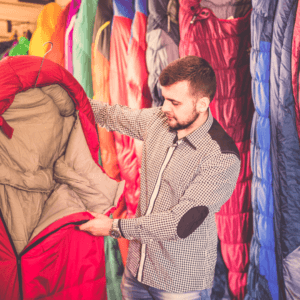
Features to look for in a sleeping bag
When you’re looking for a backpacking sleeping bag, there are a few key features to keep in mind. First, you’ll want to choose a bag with a temperature rating that’s appropriate for the climate you’ll be camping in. Next, consider the weight and packability of the bag – you don’t want something that’s too bulky or difficult to carry. Finally, make sure the bag is comfortable to sleep in and the right size for you.
Snapshot of features to consider in picking the right sleeping bag for you:
- A temperature rating that’s appropriate for the climate you’ll be camping in which is denoted as R-Value or thermal resistance of a material. (Higher the R-Value the warmer it will keep you)
- The bag should be lightweight and easy to carry, especially if you are planning to carry it for multiple miles at a time!
- The sleeping bag should be comfortable to sleep in. Read further to understand the different shapes and sizes and what to consider in that regard to stay warm and comfortable all night long.
- The right size for you is very important as it can mean the difference between sleeping all night and wanting to go home an hour after shut eye.
- A durable material that will last through multiple camping trips. You get what you pay for, meaning that typically the lowest cost backpacking sleeping bag will typically not last you very long.
Think of you backpacking sleeping bag as an investment and spend the appropriate amount of money to get the material that will keep you warm as well as be durable to last you many years.
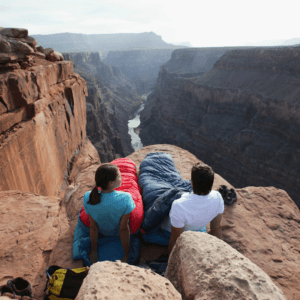
The different types of sleeping bags available
There are two main types of material backpacking sleeping bags material: down and synthetic. Both have their place and are a material factor in figuring out which backpacking sleeping bag to choose.
Down sleeping bags have a lot going for them. They’re typically lighter and more compressible, which makes them great for backpacking trips. But there are a few things to keep in mind when choosing a down sleeping bag.
Down Sleeping Bags: Pros and Cons
PROS:
- Lighter weight
- More compressible
- Keeps you warmer in colder temperatures
CONS:
- more expensive
- Not as durable as synthetic bags
- require more care (i.e. must be stored properly to maintain loft)
- can lose loft and be less effective if wet
A synthetic backpacking sleeping bag on the other hand is usually less expensive and still provide good insulation, even when wet. Synthetic being the best budget backpacking sleeping bag is usually made from polyester or some other type of man-made fiber. These materials are less expensive than natural fibers such as down, and they maintain their insulating properties even when wet.
Synthetic sleeping bags are a good choice for budget-minded campers or backpackers who anticipate being in wet conditions. However, even the best synthetic backpacking sleeping bag has the following pros and cons:
Synthetic sleeping Bags: Pros and Cons
PROS:
- Less expensive than natural fiber sleeping bags
- Maintain insulating properties even when wet
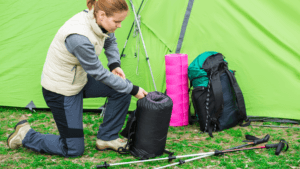
- Good choice for budget-minded campers or backpackers who anticipate being in wet conditions
CONS:
- Heavier and bulkier than natural fiber sleeping bags
- Not as compressible as natural fiber sleeping bags, so they take up more space in a backpack
- Some campers prefer the feel of natural fibers such as down
Bottom line is to choose the type of bag that’s right for you based on your budget, climate, and desired level of comfort.
How to choose the right size and fit for you
A sleeping bag is one of the most important pieces of gear for a camping trip, and choosing the right size and shape is essential for a comfortable night’s sleep. The most important factor to consider when choosing a sleeping bag is the temperature range you’ll be camping in. Sleeping bags are typically categorized by temperature range, so it’s important to choose one that’s appropriate for the conditions you’ll be encountering. Once you’ve narrowed down your choices by temperature range, you can begin to consider other factors like size, shape, and weight.
Size is an important consideration for both comfort and warmth. You want a sleeping bag that’s big enough to provide plenty of room to move around, but not so big that it leaves you feeling cold and drafty. Shape is also a factor to consider when choosing a sleeping bag. Rectangular bags are roomier and great for car camping, while mummy bags are more form-fitting and ideal for backpacking. Weight is another important consideration, especially if you’re planning on carrying your sleeping bag long distances. Choose the lightest and most compressible option that will still keep you warm in the temperature range you’re planning to camp in.
With so many factors to consider, choosing the right sleeping bag can seem daunting. But if you take the time to find one that’s suited to your needs, you’ll be rewarded with a cozy night’s sleep in the great outdoors.
Check out REI co op video on choosing the right Backpacking Sleeping Bag:
How to take care of your sleeping bag
Your sleeping bag is one of the most important pieces of gear you’ll take on a backpacking trip, so it’s important to learn how to properly care for it. Here are some tips on how to take care of your sleeping bag both during and after your trip:
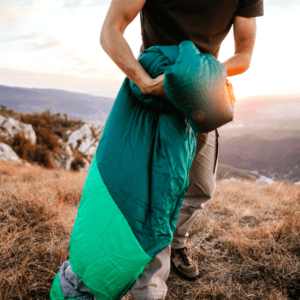
During Your Trip:
- Keep your sleeping bag clean and dry. When you’re out on the trail, your sleeping bag will inevitably get dirty. Be sure to brush off any dirt or debris before you pack it up at the end of the day. If your sleeping bag gets wet, either from rain or condensation, be sure to hang it up to dry as soon as possible.
- Store your sleeping bag properly. When you’re not using your sleeping bag, be sure to store it in a dry and well-ventilated place. If possible, store it in a mesh bag or pillowcase to keep it from getting too dusty.
- Take advantage of your surroundings and mother nature by hanging on a low tree limb or using a guy line to string between two trees to lay your backpacking sleeping bag over to air out and keep it fresh.
After Your Trip:
- Wash your sleeping bag. When you get home from your trip, be sure to wash your sleeping bag in a front-loading washing machine. Use a mild detergent and avoid using fabric softener, as this can damage the insulation.
- Dry your sleeping bag. Once you’ve washed your sleeping bag, be sure to dry it thoroughly. If possible, dry it in a commercial dryer on low heat. If you don’t have access to a dryer, you can hang your sleeping bag in a sunny spot to air dry.
- Store your sleeping bag properly. Be sure to store your sleeping bag in a cool, dry place. Avoid storing it in a stuff sack, as this can damage the insulation. If possible, store your sleeping bag in a cotton storage bag to allow it to breathe.
Tips for using your sleeping bag while backpacking
There are many ways to use your sleeping bag while backpacking or camping that doesn’t include the main function of sleeping in it.
Here are 6 helpful tips and tricks on how to get the most out of your sleeping bag:
- Using your surroundings, you can string up your sleeping bag to give some shade to your camp site and air out your bag at the same time.
- As a quick follow up to the above tip, in an emergency you can also string a guy line across two trees and lay your opened bag over it. Using stakes or other tools to keep down the corners you can make a lean-to or shelter if needed.
- If it’s cold outside, wear breathable clothes for bed as cold weather backpacking sleeping bags are meant to take your body heat and encapsulate it inside the insulation.
- If it’s hot outside, open up your sleeping bag to let air circulate and cool you down. A lot of newer bags offer two zippers so that you can open the bottom for ventilation on hot nights.
- Most backpacking sleeping bags come with a compression sack and some are even considered “dry bags”. These bags can be useful around the campsite for keeping items away from the dirt or rain.
- Lastly, most non-mummy backpacking sleeping bags can be opened to lay flat and this can be used as extra padding for the inside floor of your tent or as a comforter of sorts if sleeping on a warmer night.
Ultimate Backpacking Sleeping Bag Guide FAQs:
What is a good weight for a backpacking sleeping bag?
As a general rule of thumb I try to keep all my backpacking sleeping bags under 3lbs and you can find a good selection of 3-season rated bags under 2lbs, however, you still start to see an steep increase in price as you get into the ultralight ratings while still having 3 or even 4 season ratings for warmth.
What degree sleeping bag do I need?
The best all-around degree rating for most campers is 20deg rated backpacking sleeping bag. You need to take note, however, that most degree ratings on sleeping bags are taking into account the R-rating of the sleeping pad you are using being 5.5 and that you are wearing long underwear and socks.
What Type of Sleeping Bag Is Best?
The answer is a big, fat… depends! There are two major insulation types of sleeping bags; down and synthetic. And there are pros and cons to both that all depend on the type of backpacking or camping you plan to do and the type of weather you anticipate running into. This Ultimate Backpacking Sleeping Bag Guide breaks down those pros and cons so you can make an informed decision on the best, next bag for you.
What Is the Lightest Backpacking Sleeping Bag?
The lightest insulation material you can find in a backpacking sleeping bag is down material and in the ultralight category of under 2lbs you will find treated down insulation to keep the temperature ratings extreme while also giving extreme light weight.
What sleeping bag is best for backpacking?
Typically when backpacking you need to find any place to cut weight in your pack for your journey and the sleeping bag is a great place to start. For starters, a lighter weight sleeping bag typically can be packed down into a smaller space making more room for other gear. Secondly, these days down sleeping bags give the added comfort of low temperature ratings while also giving lighter weight than some synthetic counterparts.
What is the best ultralight sleeping bag?
Looking for a lightweight, high-quality sleeping bag to keep you warm on your next camping or backpacking trip? Look no further than the Hyke & Byke Eolus 0 F Hiking & Backpacking Sleeping Bag. This bag features vertical baffles that allow the adjustment of the 800 fill power insulation to move where the fill is needed the most, ensuring that you stay comfortable down to 0 degrees Fahrenheit. Plus, at only 3.10 lbs, this sleeping bag boasts a superior weight-to-warmth ratio, making it perfect for thru-hiking and
>> Check out our Top 5 Four-Season Rated Backpacking Tents Here >>
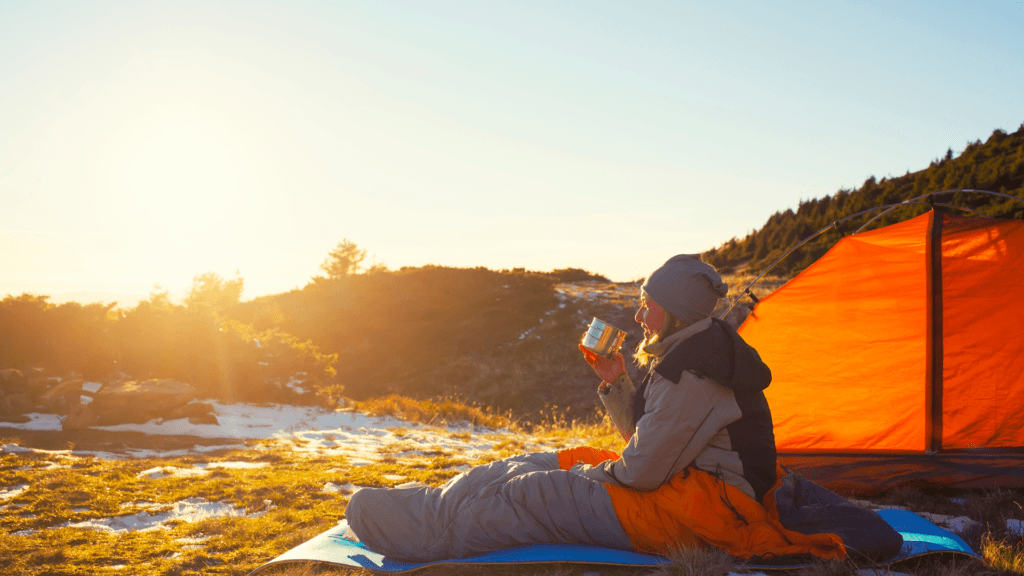
Ultimate Backpacking Sleeping Bag Guide Summary
The backpacking sleeping bag you choose for your next adventure is important for a comfortable night’s sleep. With so many factors to consider, it can be daunting to choose the right one. This guide covered how to take care of your sleeping bag both during and after your trip, as well as tips on using it while backpacking. By following these tips, you’ll be sure to have a comfortable and enjoyable trip.
Did you find this article useful? What is the next backpacking sleeping bag you are taking on your next adventure? Let us know in the comments below!
– Outdoorsymore.com
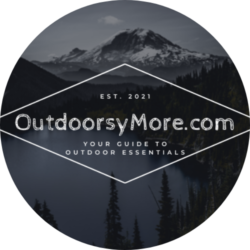
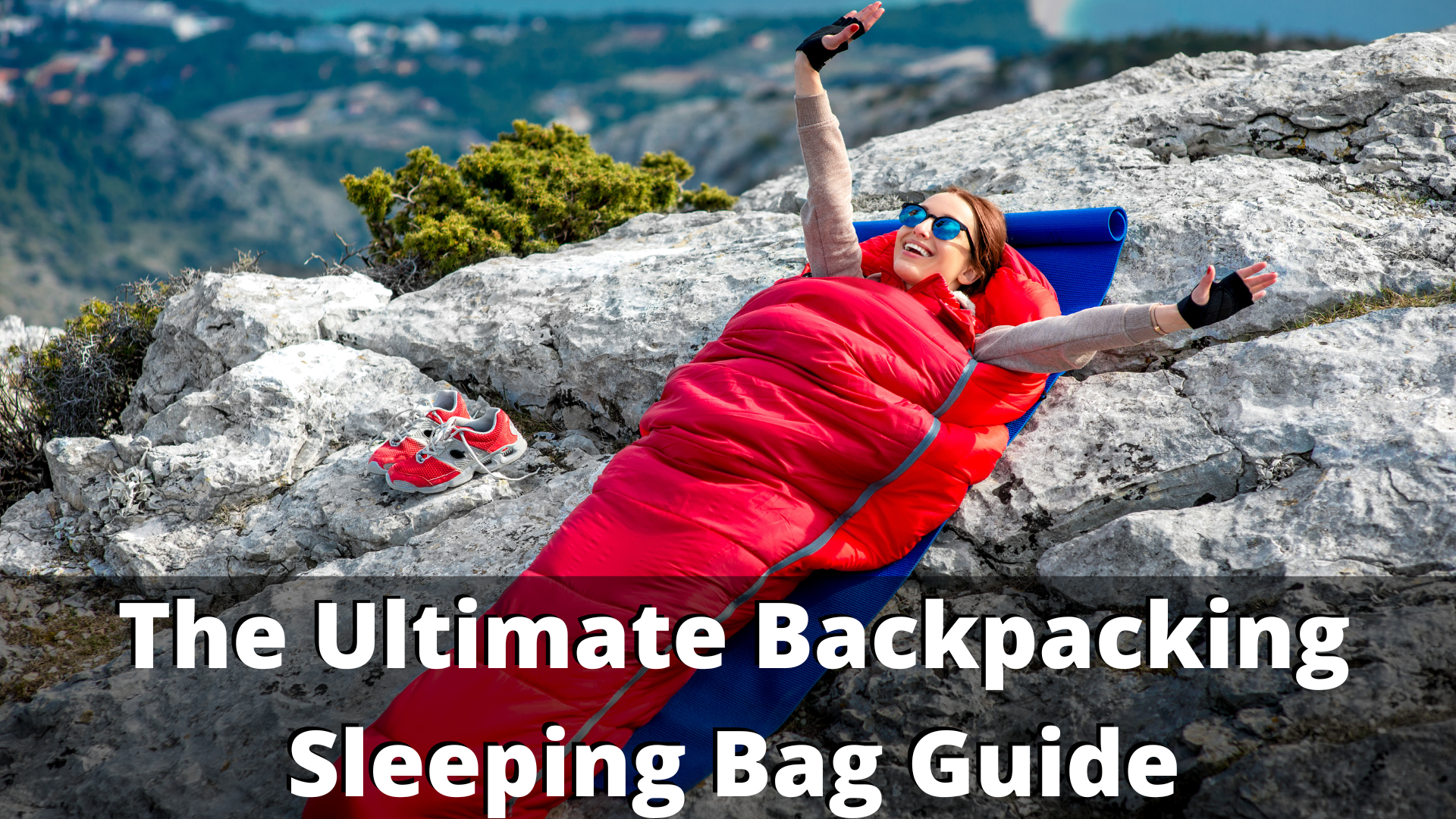
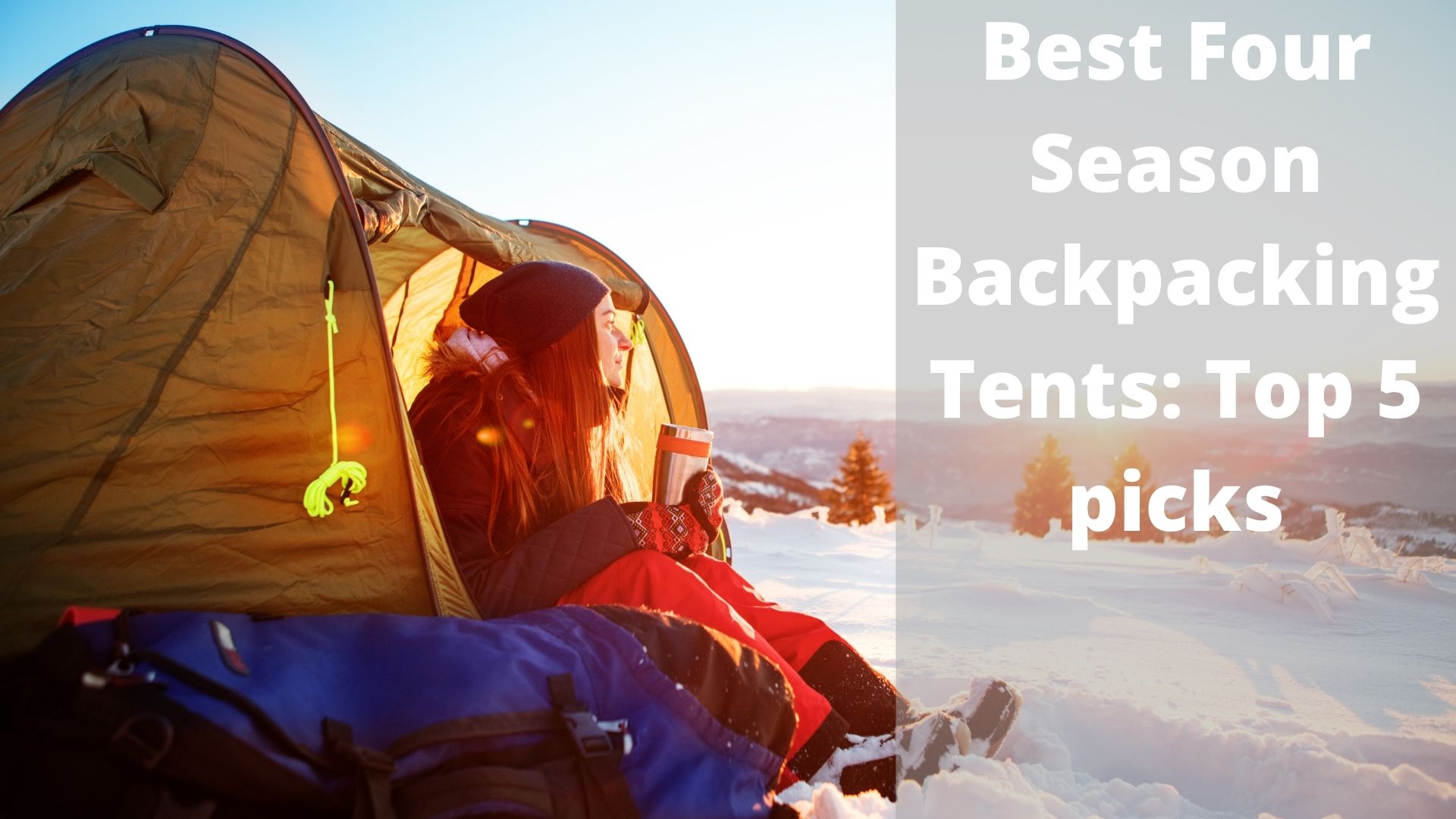
Hello!
To be honest, I didn’t know that backpacking sleeping bags are different from regular camping sleeping bags. I’ve noticed that it is different in three important ways: they’re lighter, they pack smaller, and they have a higher warmth-to-weight ratio.
It works close to a bed in situations where bed is not available.
Thanks so much for your post. Knowledge is power.
Hello Kayamba! Yes it is interesting just how much knowledge is out there, even when it comes to the differences in sleeping bags! Keep learning!
It is highly informative and thoughtful blog for getting your optimal sleeping bag for hiking.
This is one of your most important gear. It helps you rest well at night before you start your hiking trip where you don’t want to feel tired due to lack of good sleep the previous night. You can get into back pain situation if you don’t get the sleeping bag to rest your back. I suffer from back pain at times during link walks on a trail if I don’t sleep well.
Your guide provides details to choose. I would not be looking that much to the budget (I may trim somewhere else). Getting weather appropriate sleeping bag with temperature you want to sleep comfortably would be my consideration. Weights can be a concern if you are like me. I don’t like carrying heavy package.
I will follow your step-by-step guidance to get the best of my sleeping bag. I have mum and rectangular but I like rectangular more.
This post reminds me of the days when I used to do at lot of camping activities but in recent year I have not done anything remotely close to camping. I love the outdoor but have found my self very busy with other things. Thanks for all the tips on how to care for a sleep bag, using it and your back packing guide. I prefer tents but I have used sleep bags before and I don’t think much care was given to prevent damage to it. Presently I don’t have a sleeping bag. Should I decide to get back to such outdoor activities and buy a sleep bag I would consider the tip given here.
I haven’t been camping in over 5 years, but I do still have my old sleeping bag. This bag has been with me for more than 15 years at this point. Extremely durable, but I’m looking to have a little upgrade. So glad I came across this piece, so much information I had never taken into consideration and now that I can properly picture what I want in a sleeping bag, I can finally make a smart decision.
Having a good sleeping bag when you are camping, is essential. There is nothing worse than being cold all night because your sleeping bag doesn’t have the right rating for the temperatures where you are hiking. If you are carrying your sleeping bag on your backpack, you certainly want it to be as lightweight as possible, while also providing insulation.
You mention that down is the warmest and lightest for a backpacking sleeping bag. Do you have a recommended brand for down sleeping bags that are also Responsible Down Standard (RDS) certified? Thank you.
Hello LineCowley great question regarding RDS certified products! Most of the more well-known brands like Marmot, Patagonia, and even REI-Coop provide RDS certified products and what is nice is that their websites make it easy to filter for those products if you so choose!
If I plan a vacation in the mountains with my husband, I will listen to your advice. It’s good that you wrote what we need to pay the most attention to. Normally, when I travel, I don’t like to carry a lot of stuff because it takes up a lot of space in the car. I would also like it to be a smaller bag that will be ideal for hiking.
Thank you for sharing this informative blog post. The topic you discussed is intriguing, and your insights were enlightening. To gain more knowledge on this subject, simply click here. Well done!
Thank you for sharing this informative blog post. The topic you discussed is intriguing, and your insights were enlightening. To gain more knowledge on this subject, simply click here. Well done!